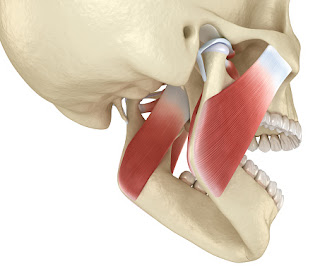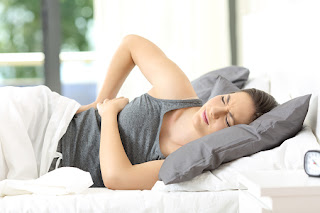The Common Migraines In Children
Migraines in children are very common. Estimates indicate that 3.5–5% of all children will experience recurrent headaches consistent with migraine. Child migraines treatment are consists of identifying triggering factors, providing pain relief, and considering prophylaxis.
No specific diagnostic test is available; the diagnosis is made by history and examination. Possible reasons for the current presentation, including past history, previous test results, allergies, and current and previous medication usage.
Family history of headache
Quality of the headache
Other aspects of the headache
Manifestations of migraine may vary according to patient age, as follows:
Infants may present with only episodic head banging
Preschool children often have episodes involving an ill appearance, abdominal pain, vomiting, and the need to go to sleep; they may exhibit pain by irritability, crying, rocking, or seeking a dark room in which to sleep
Children aged 5-10 years typically have bifrontal, bitemporal, or retro-orbital headache; nausea; abdominal cramping; vomiting; photophobia; phonophobia; a need to sleep; migraine facies; tearing, swollen nasal passages; thirst; edema; excessive sweating; increased urination; or diarrhea
Older children may experience increasing headache intensity and duration; a pulsating or throbbing character to the headache; and a shift to a unilateral, temporal location
A thorough general physical examination and a detailed neurologic examination are indicated. All examination findings should be completely normal. Follow-up evaluations are necessary for patients with any of the following:
Abnormal vital signs
Nuchal rigidity
Cranial nerve abnormalities
Macrocephaly
Bruits
Papilledema
Cutaneous lesions
Cognitive changes
Asymmetrical signs
Prevention
The following may help you prevent headaches or reduce the severity of headaches in children:
Practice healthy behaviors. Behaviors that promote general good health also may help prevent headaches for your child. These lifestyle measures include getting plenty of sleep, staying physically active, eating healthy meals and snacks, drinking four to eight glasses of water daily, and avoiding caffeine.
Reduce stress. Stress and busy schedules may increase the frequency of headaches. Be alert for things that may cause stress in your child’s life, such as difficulty doing schoolwork or strained relationships with peers. If your child’s headaches are linked to anxiety or depression, consider talking to a counselor.
Avoid triggers. Avoid any food or drinks, such as those containing caffeine, that seem to trigger headaches. Your headache diary can help you determine what prompts your child’s headaches, so you know what to avoid.
Follow your doctor’s plan. Your doctor may recommend preventive medication if the headaches are severe, occur daily and interfere with your child’s normal lifestyle. Certain medications taken at regular intervals — such as certain antidepressants or anti-seizure medications — may reduce the frequency and severity of headaches.
Treatment
Usually you can treat your child’s headache at home with rest, decreased noise, plenty of fluids, balanced meals and over-the-counter (OTC) pain relievers. If your child is older and has frequent headaches, learning to relax and manage stress through different forms of therapy may help, as well.
Medications
OTC pain relievers. Acetaminophen (Tylenol, others) or ibuprofen (Advil, Motrin, others) can typically relieve headaches for your child. They should be taken at the first sign of a headache.
Use caution when giving aspirin to children or teenagers. Though aspirin is approved for use in children older than age 3, children and teenagers recovering from chickenpox or flu-like symptoms should never take aspirin. Aspirin has been linked to Reye’s syndrome, a rare but potentially life-threatening condition, in such children. Talk to your doctor if you have concerns.
Prescription medications. Triptans, prescription drugs used to treat migraines, are effective and can be used safely in children older than 6 years of age.
If your child experiences nausea and vomiting with migraines, your doctor may prescribe an anti-nausea drug. The medication strategy differs from child to child, however. Ask your doctor or pharmacist about nausea relief.
Caution: Overuse of medications is itself a contributing factor to headaches (medication overuse headache). Over time, painkillers and other medications may lose their effectiveness. In addition, all medications have side effects. If your child takes medications regularly, including products you buy over-the-counter, discuss the risks and benefits with your doctor.
Therapies
While stress doesn’t appear to cause headaches, it can act as a trigger for headaches or make a headache worse. Depression and other mental health disorders also can play a role. For these situations, your doctor may recommend one or more behavior therapies, such as:
Relaxation training. Relaxation techniques include deep breathing, yoga, meditation and progressive muscle relaxation, in which you tense one muscle at a time. Then you completely release the tension, until every muscle in the body is relaxed. An older child can learn relaxation techniques in classes or at home using books or videos.
Biofeedback training. Biofeedback teaches your child to control certain body responses that help reduce pain. During a biofeedback session, your child is connected to devices that monitor and give feedback on body functions, such as muscle tension, heart rate and blood pressure.
Your child then learns how to reduce muscle tension and slow his or her heart rate and breathing. The goal of biofeedback is to help your child enter a relaxed state to better cope with pain.
Cognitive behavioral therapy. This therapy can help your child learn to manage stress and reduce the frequency and severity of headaches. During this type of talk therapy, a counselor helps your child learn ways to view and cope with life events more positively.
Finally, it is important to follow the recommendations from your child’s healthcare provider carefully and report any side effects or lack of improvement rather than simply stop treatment. With some positive changes in lifestyle, an appropriate regimen for the treatment of acute headache and a well-chosen preventive treatment, a child experiencing uncontrolled migraine attacks can typically anticipate significant improvement and, consequently, improved quality of life.




Comments
Post a Comment